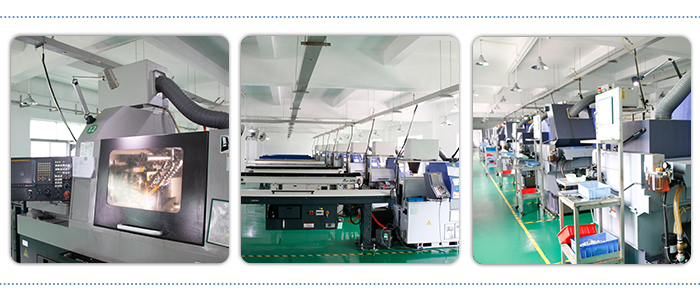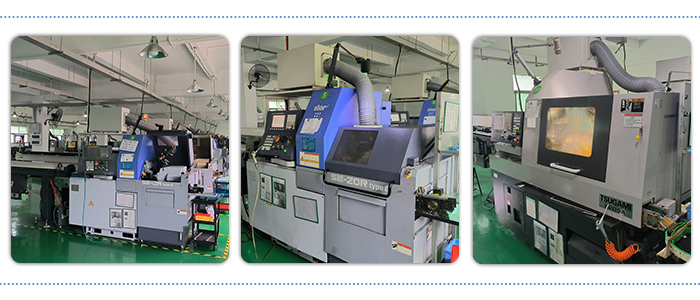In my years of working in the CNC machining industry, I’ve often been asked about the best materials for producing seals. Seals are essential components in a variety of industries, from automotive to aerospace, and choosing the right material for CNC machining can make all the difference in performance, durability, and cost-effectiveness. Two of the most commonly used materials for CNC machined seals are ABS (Acrylonitrile Butadiene Styrene) and Polyurethane (PU). Both materials are used in different sealing applications, but they offer distinct characteristics that can influence their suitability for specific projects.
In this article, I will compare ABS and Polyurethane (PU) in the context of CNC machining for seals. I’ll break down their individual properties, machining challenges, performance in sealing applications, and their pros and cons based on my professional experience. By the end of this post, you should have a clear understanding of which material is best suited for your sealing needs.
What is CNC Machining for Seals?
CNC machining refers to Computer Numerical Control machining, where automated machines are used to precisely cut, shape, or form materials into specific designs based on pre-programmed software. This process is widely used to manufacture parts that require high precision and tight tolerances—such as seals. CNC machining allows for the accurate production of custom seals from various materials, including metals, plastics, and elastomers like Polyurethane (PU).
Seals made from CNC-machined materials play a crucial role in preventing leaks in mechanical systems. They’re commonly used in engines, pumps, hydraulic systems, and other equipment that require fluid or gas containment. Materials like ABS and PU are particularly popular in sealing applications because of their versatility and ease of machining.
Overview of ABS and Polyurethane (PU)
Before diving deeper into CNC machining with ABS and PU, let’s review the basic properties of these materials and how they perform in sealing applications.
ABS (Acrylonitrile Butadiene Styrene)
ABS is a thermoplastic polymer widely used in various applications due to its excellent impact resistance, toughness, and ease of processing. It is known for its rigidity, stability, and chemical resistance, which makes it suitable for applications requiring high strength and structural integrity.
Key Properties of ABS:
- Impact Resistance: Excellent, making it durable and able to withstand physical wear.
- Stiffness and Rigidity: ABS is stiff, providing strength in structural components.
- Chemical Resistance: Good resistance to certain chemicals but may not be suitable for exposure to harsh solvents.
- Temperature Resistance: Moderate temperature resistance (around 100°C), making it less ideal for extreme temperature environments.
- Applications: Used in automotive parts, consumer electronics, and some sealing applications.
Polyurethane (PU)
Polyurethane (PU) is an elastomeric material known for its flexibility, wear resistance, and outstanding abrasion resistance. PU seals are frequently used in dynamic sealing applications where they need to handle movement, such as in hydraulic systems and pumps. PU’s ability to absorb impacts and its superior resistance to wear make it a popular choice for applications where flexibility and durability are key.
Key Properties of Polyurethane (PU):
- Elasticity and Flexibility: PU offers excellent flexibility, ideal for dynamic seals.
- Abrasion Resistance: Superior, making it an excellent choice for seals exposed to wear.
- Chemical Resistance: Very good resistance to oils, solvents, and fuels, although performance can vary by formulation.
- Temperature Resistance: Greater temperature range than ABS (up to 120°C).
- Applications: Commonly used in hydraulic systems, automotive seals, and industrial machinery.
CNC Machining for ABS and Polyurethane (PU): A Detailed Comparison
1. Machining Difficulty and Precision
When it comes to CNC machining, precision is essential, especially in sealing applications where tight tolerances are necessary. Let’s explore how ABS and PU compare in terms of machining ease and their ability to meet tight specifications.
ABS Machining:
- Ease of Machining: ABS is relatively easy to machine due to its rigidity and low melting temperature. CNC machines can process ABS at faster speeds with fewer tool changes, which is great for large-volume production.
- Precision: ABS offers good precision when machined, but it can warp if heated too quickly during the machining process. Cooling rates must be controlled carefully to avoid this issue.
- Finishing: ABS can achieve a smooth surface finish relatively easily, but it might require additional post-machining steps like sanding or coating for certain sealing applications.
Polyurethane (PU) Machining:
- Ease of Machining: Polyurethane is more challenging to machine than ABS due to its elastomeric nature. It can be prone to stretching and deformation, making it harder to hold tolerances during machining.
- Precision: PU can be machined with precision, but it requires slower cutting speeds and specific tooling to prevent distortion. For highly intricate seals, specialized tooling may be needed to avoid tearing or stretching of the material.
- Finishing: PU’s ability to absorb energy and deform makes it more difficult to achieve an ultra-smooth finish. Post-machining treatments like grinding or polishing are often required to achieve the desired finish.
Conclusion: ABS is generally easier and faster to machine than Polyurethane, but PU is still a feasible material for seals with dynamic or flexible applications. Precision is achievable with both, but PU requires more care and attention during the machining process.
2. Wear and Tear Resistance in Sealing Applications
When selecting materials for seals, wear resistance is paramount, especially in industries such as automotive and industrial manufacturing. Let’s take a look at how ABS and PU perform in terms of durability.
ABS Wear Resistance:
- Strength: ABS has strong impact resistance and is tough in applications where mechanical stresses are prevalent. However, it is more prone to wear and tear compared to more flexible materials like PU.
- Sealing Performance: In static applications where there’s less movement or abrasion, ABS seals work well. However, in dynamic sealing applications where movement and friction occur, ABS might wear down faster, compromising seal integrity.
Polyurethane (PU) Wear Resistance:
- Abrasion Resistance: PU is an elastomer, so it naturally has excellent wear resistance, especially in applications where there’s friction or movement. Its elasticity allows it to absorb shocks and impact, which makes it ideal for sealing under high-pressure and dynamic conditions.
- Sealing Performance: Polyurethane is the go-to material for seals exposed to constant movement, abrasion, and high-pressure environments. It outperforms ABS in terms of durability under these conditions.
Conclusion: If your sealing application involves high friction, wear, or movement, Polyurethane is the superior choice. ABS is better suited for static sealing applications with minimal movement.
3. Chemical and Environmental Resistance
In many sealing applications, exposure to chemicals, oils, and extreme temperatures is unavoidable. Let’s evaluate how ABS and PU handle these challenging environments.
ABS Chemical Resistance:
- Resistance to Chemicals: ABS has good resistance to a range of chemicals, but it is not suitable for exposure to harsh solvents or oils for extended periods. It is more prone to degradation under certain chemical environments.
- Environmental Performance: ABS performs adequately in moderately harsh environmental conditions but may lose its structural integrity when exposed to extreme weather or UV radiation for prolonged periods.
Polyurethane (PU) Chemical Resistance:
- Resistance to Chemicals: Polyurethane excels in chemical resistance, particularly against oils, fuels, and hydraulic fluids. It can handle exposure to more aggressive substances without breaking down, making it ideal for automotive, hydraulic, and industrial applications.
- Environmental Performance: PU also offers excellent resistance to environmental factors, such as UV radiation and extreme temperatures, providing long-term performance in outdoor or extreme conditions.
Conclusion: Polyurethane is the better option for sealing applications exposed to chemicals, oils, or extreme weather. ABS may perform adequately in certain environments but lacks the versatility and durability of PU in harsh conditions.
4. Cost and Availability
Both ABS and Polyurethane are readily available for CNC machining, but there are significant differences when it comes to cost.
- ABS: ABS is generally more affordable than Polyurethane, making it an attractive option for budget-conscious projects. It is widely available and used in mass production due to its lower material and machining costs.
- Polyurethane (PU): Polyurethane is more expensive than ABS, particularly for high-grade formulations. However, its superior durability and performance in demanding sealing applications can justify the additional cost in certain cases.
Conclusion: If you’re looking to minimize costs for simple, static sealing applications, ABS is the more affordable option. For more demanding, high-performance sealing needs, PU offers long-term value despite its higher initial cost.
Conclusion: Which Material Should You Choose for CNC Machined Seals?
When choosing between ABS and Polyurethane (PU) for CNC machining of seals, the decision comes down to the specific needs of your application.
- If you need high wear resistance, flexibility, and durability in dynamic sealing applications, Polyurethane is the best choice.
- If your project involves static sealing or conditions that don’t require extreme flexibility or wear resistance, ABS might be more suitable, especially if you’re looking for a more cost-effective solution.
At YL Machining, we offer expert CNC machining services for both ABS and Polyurethane, ensuring that you get the right material and precise machining to meet your sealing needs. Whether you’re producing static seals or dynamic, high-performance parts, we can guide you through the process to find the perfect material and machining solution for your project.



